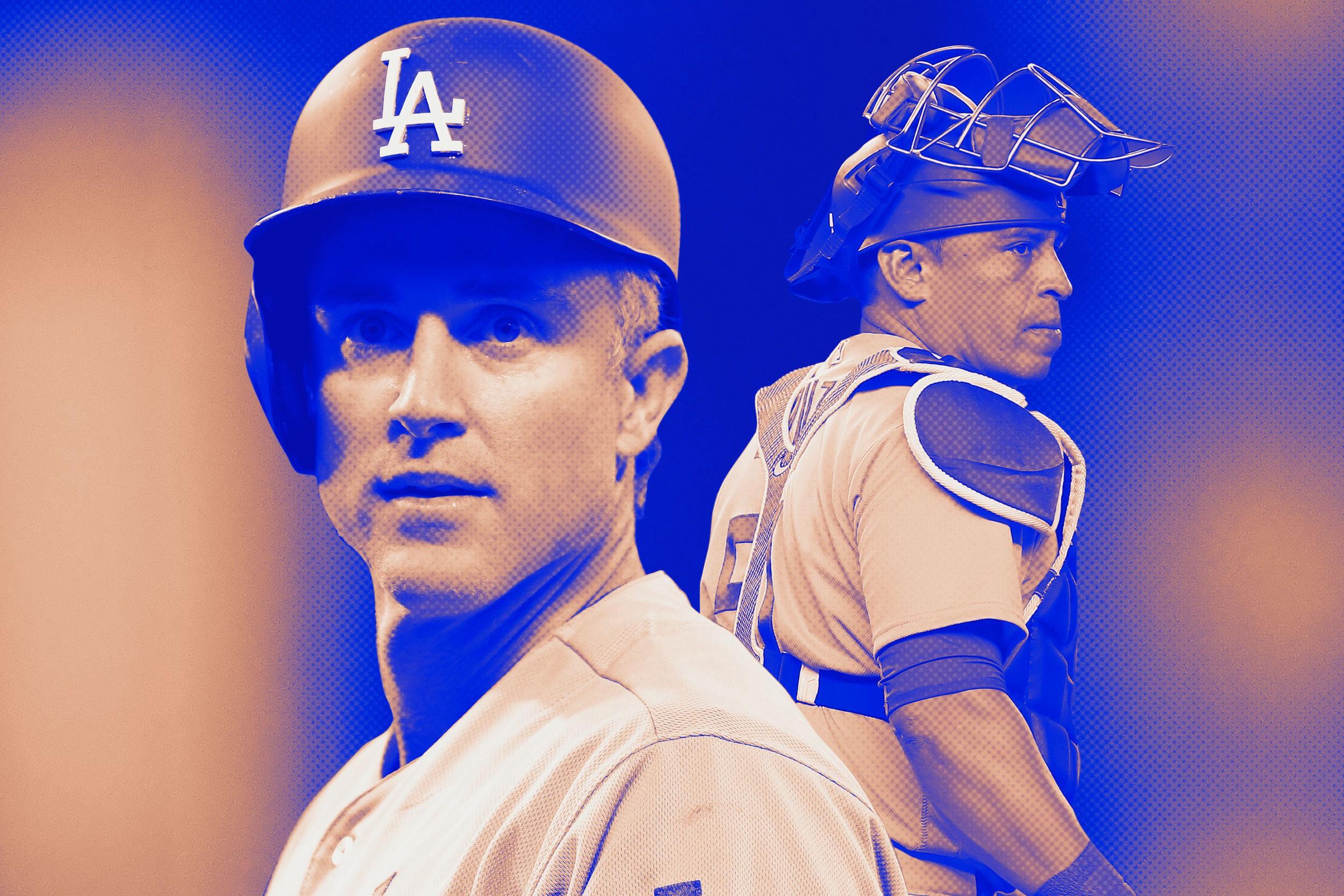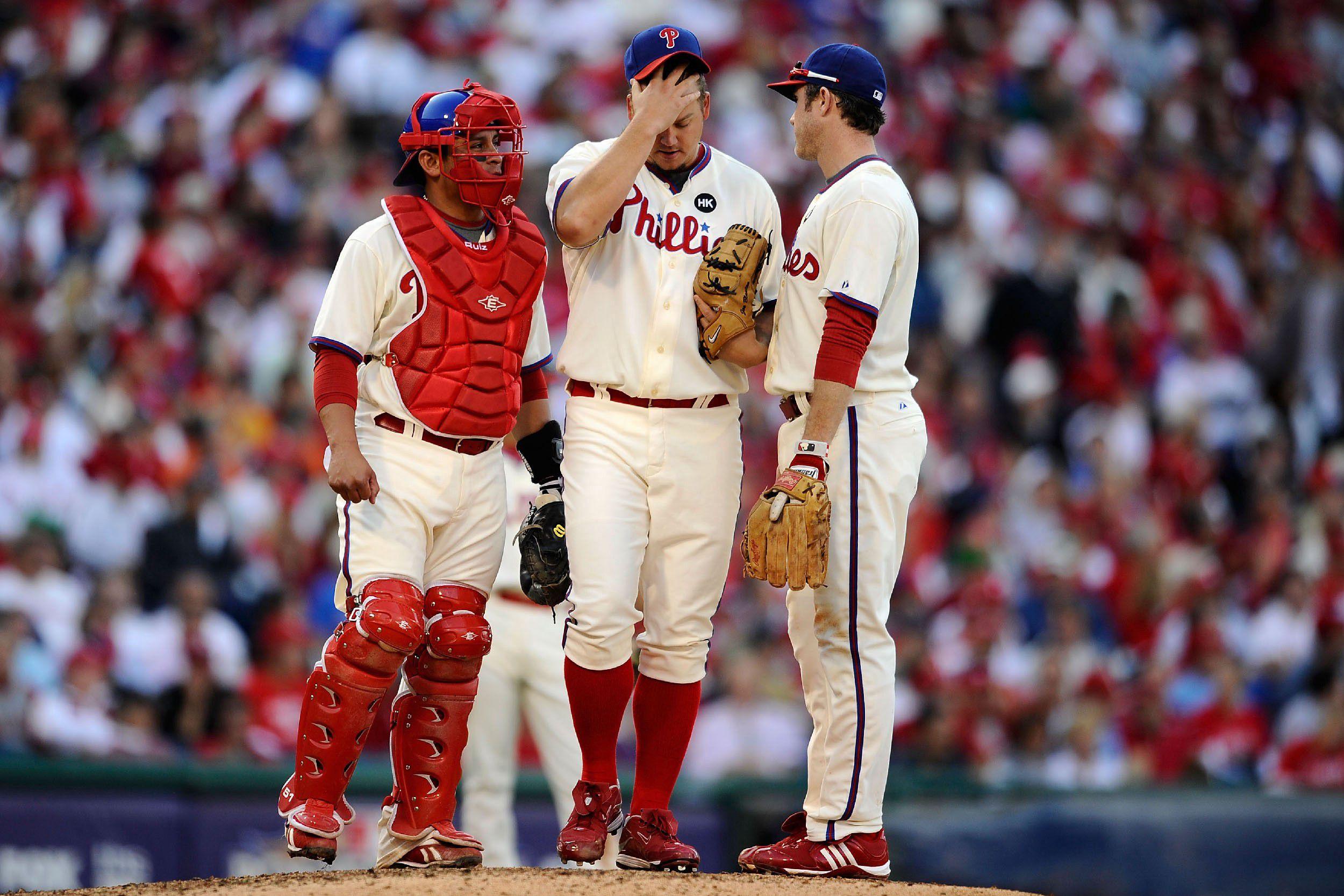The Rivalry That Wasn’t Gets Another Chance
Will a trio of ex-Phillies in Dodger blue haunt Washington again?
If you’ve spent any time watching the Dodgers over the past couple of years, you might have noticed something: They look an awful lot like the vintage Phillies. Chase Utley, Carlos Ruiz, Joe Blanton, and, until this year, Jimmy Rollins — heroes of the 2008 team that brought Philadelphia its only sports championship since 1983 — have spent a lot of time in blue.
So as you watch Utley walk up to the plate on Thursday night for the decisive Game 5 of the NLDS at Nationals Park, remember this: Once upon a time, the Washington Nationals hated him and everything he stood for — and now, with the 37-year-old second baseman in the midst of an improbable resurgence, he and his fellow ex-Phillies might yet find a way to resurrect the rivalry that wasn’t.

In its earliest years, the new Washington franchise was a perennial punching bag for a dominant Philadelphia squad. Twice, the Phillies clinched the NL East at Nats Park; their fans took to cheering, “This is our house!” and holding up signs that read “Welcome to Citizens Bank Park South.”
The Nationals were a brand-new ballclub back then, and on the hunt for many things that, 11 years in, the team now takes for granted: a reliable fan base, division titles, team lore. They were also keen on finding a divisional rival, and Philadelphia, which won the division five years running beginning in 2007, was the obvious target.

Tension between the teams grew after Jayson Werth defected from Philly to D.C. before the 2011 season, signing a seven-year, $126 million contract with the Nationals. The following spring training, Nats GM Mike Rizzo reportedly declared, “I hate the [expletive] Phillies,” to which Werth allegedly responded, “I hate them, too.” (Rizzo later denied that this took place, clarifying: “What I hate is the fact that the Phillies have had so much success at our expense.”)
In 2012, the Nationals took drastic measures, staging what they called a “Take Back the Park” initiative: For the first month after single-game tickets went on sale, they could be purchased with only credit cards connected to a Maryland, D.C., or Virginia billing address.
This tactic was aimed squarely at the Philadelphians who filled Nationals Park when their team came to town. “Frankly I was tired of seeing it,” then–Nationals chief operating officer Andy Feffer told The Washington Post. “Forget you, Philly. This is our park, this is our town, these are our fans, and it’s our time right now.”

The rivalry never quite took. Philly fans were always more interested in antagonizing the Mets, and then, just as the Nationals found their footing, the Phillies went into a deep rebuild. Bryce Harper debuted in 2012, two years after Stephen Strasburg, kicking off a new era in Washington. The Phillies, meanwhile, have ranked fourth or fifth in the NL East each of the last four seasons, coming in dead last in the league in 2015. Utley was traded to the Dodgers that August; he was joined there this season by Ruiz and Blanton, who is in his second stint with L.A.
This year marks the Nationals’ third visit to the NLDS since 2012; the team has never advanced beyond it. Nationals fans still get questioned for their loyalty — this month, principal owner Mark Lerner wrote an open letter to fans encouraging them to take part in the witches’ Sabbath known as standing for crucial moments of playoff games.
“So I want you to stand up and cheer when we get two strikes on a Dodgers’ batter,” Lerner wrote. “Stand up and cheer for our players by name. Stand up for the entire game if that’s what it takes!”
But things are getting better. In 2013, the Nationals drew more than 30,000 visitors per game for the first time, a mark the team has surpassed every season since. Certain gimmicks — the Presidents Race, for one — have come to feel like genuine traditions. (Less so for Screech.) Even the slogans have started to feel — well, familiar, if nothing else.
Now they have the chance to add something more to that, something enduring, something that — ahem — might be stitched onto a flag and hung inside the park.
That is, of course, unless the ghosts of Phillies past come back to haunt them.

